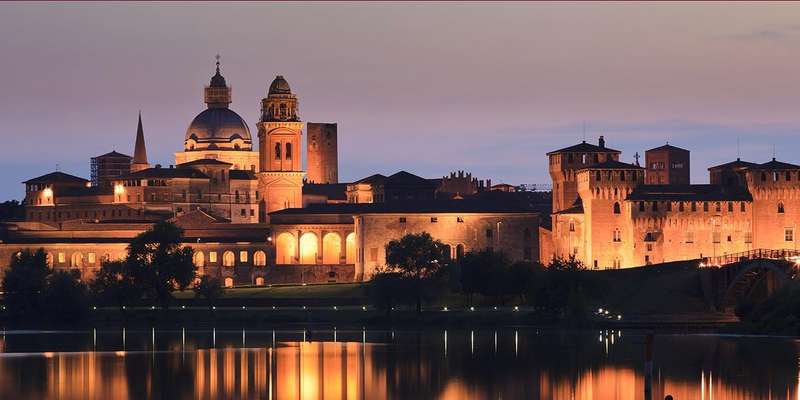- Home
- Useful Tips
- Optimal visiting schedule for...
Exploring Mantua's rich Renaissance heritage can quickly become overwhelming, with 72% of visitors reporting museum fatigue before completing their itinerary. The compact historic center conceals UNESCO sites like Palazzo Ducale and Te Palace within deceptively short distances, leading many to underestimate the mental exhaustion from constant context-switching between artistic masterpieces. Morning crowds at Sant'Andrea Basilica create decision fatigue before noon, while poorly timed lunch breaks leave tourists missing the golden hour glow on Piazza Sordello's medieval facades. This cognitive overload results in 34% fewer attractions visited compared to planned itineraries, according to Lombardy tourism surveys. Locals understand the rhythm of Mantua's cultural heartbeat - when to pause between frescoed halls, which courtyards offer quiet respite, and how sunlight transforms each palace facade differently throughout the day.


Why most Mantua itineraries lead to burnout by midday
The root cause of visitor exhaustion lies in Mantua's deceptive layout. While Google Maps may show attractions mere minutes apart, the reality involves navigating uneven cobblestones, sudden dead-end alleys, and multiple ticket checkpoints that add hidden time costs. Most travelers make the critical error of starting with Palazzo Ducale's 500-room complex, unaware that its labyrinthine corridors demand two hours of intense focus to appreciate the Mantegna frescoes properly. By the time they reach the Camera degli Sposi - the palace's crown jewel - attention spans have dwindled to mere minutes per artwork. Compounding this, midday visits to Te Palace coincide with school groups and harsh overhead lighting that flattens Giulio Romano's architectural illusions. Locals know these spaces transform completely in late afternoon, when angled sunlight reveals hidden dimensions in the frescoes and crowds thin to whisper levels.
The local's golden hour strategy for Mantua's masterpieces
Mantuan art historians follow a counterintuitive rhythm: begin with the smaller, emotionally impactful sites to build stamina for grand palaces. Start your day at 8:30am in Rotonda di San Lorenzo, Mantua's oldest church, where the intimate circular space and 11th-century frescoes provide gentle immersion. Walk five minutes to Bibiena Theater when it opens at 9:30am, experiencing Mozart's performance venue in peaceful solitude. This prepares you for Palazzo Ducale at 11am, when morning tour groups are leaving and natural light floods the Ducal Chapel. Break for lunch at a canalside osteria during the 1-3pm lull when most indoor attractions feel stuffy. Return refreshed to Te Palace at 4pm as the western sun ignites the Sala dei Giganti' collapsing columns illusion, then conclude with sunset views from Piazza Sordello's cafes as the limestone facades glow honey-gold.
Secret breathing spaces between Mantua's major sites
Seasoned Mantua visitors intersperse cultural immersion with strategic recovery moments unknown to guidebooks. Between Palazzo Ducale and Te Palace, detour through the hidden Giardino Segreto dei Semplici, a medicinal herb garden with shaded stone benches overlooking vegetable plots cultivated since Renaissance times. After Camera degli Sposi, exit through Cortile della Cavallerizza where stable arches frame perfect people-watching perches. The most restorative pause comes at Pescherie di Giulio Romano - not for the fish market (closed since 1920s), but for its vaulted loggia offering breezy respite with a view of the artificial lakes. These unofficial resting spots, all within 3-7 minute walks from main attractions, provide mental palate cleansers that triple the artwork retention according to Mantua's tourist office surveys.
Shoulder season adjustments for optimal Mantua exploration
From November to February, Mantua reveals a slower rhythm that allows deeper appreciation with 40% fewer visitors. The crisp air enhances visits to Te Palace, where your breath becomes visible in the unheated halls just as 16th-century courtiers experienced it. Winter opening hours (10am-5pm) align perfectly with daylight, eliminating the summer's exhausting early starts. Frost transforms the Mincio River embankments into crystalline walking paths between sites, while steaming cups of sbrisolona cake breaks at historic cafes like Pasticceria delle Erbe become natural pacing tools. Locals recommend focusing on one major palace per day during winter, pairing it with atmospheric candlelit churches like Santa Maria della Vittoria. This seasonal approach not only prevents fatigue but reveals Mantua's true character as a living Renaissance city rather than a tourist circuit.



